Van Gogh’s Ear
So many people think that Vincent Van Gogh cut off his whole ear and sent it to his lover, but that’s not entirely true. He only cut off the bottom of his ear lobe. This story just adds to the idea of Van Gogh as a tortured artist.

Historians think that Van Gogh might have cut off part of his ear after a fight with his friend and fellow artist, Paul Gaugin, or because he was upset about his brother’s engagement. Whatever it was, it’s important to know he didn’t cut off his whole ear.
The Salem Witch Trials
It is a common belief that witches were burned at the stake during the Salem Witch Trials in Salem, Massachusetts, in 1692 and then again in 1693. But this is simply not true, and no women were harmed by the fire.

What really happened is that 19 people were hanged, with one being crushed by rocks. The idea of burning witches probably comes from Europe, where witch burnings happened during a period of witch hysteria between the 15th and 18th centuries.
Did Romulus Really Found Rome?
According to legend, Rome was named after a man called Romulus, who, along with his twin brother Remus, was raised by wolves. Their father was Mars, God of war, and Romulus went on to vainly name the city after himself.

But historian Theodore Mommsen has put the record straight. He told The New York Times that this is impossible as Romulus and Remus likely never existed and most definitely weren’t raised by wolves. It seems it was just another myth passed down over the centuries.
The Creation of the American Flag
Many believe that Betsy Ross was the first to sew the American flag, but this is likely just a myth. And while she sewed some flags, the story that she made the very first American flag came from her grandson 100 years later.

Although it’s a great story, there is no real evidence to support his claim, and no newspapers, letters, or historical documents mention her sewing that first flag. Now that we know it wasn’t her, we would love to know who did.
300 Spartans Vs. The Persian Army
One of the most famous stories from Ancient Greece is about Spartan leader Leonidas and his army of 300 men fighting the huge Persian Army at the battle of Thermopylae in 480 BC. But sadly, it is just another myth.

The idea that only 300 Spartans fought is a bit of a stretch when, in reality, around 4,000 soldiers from other Greek cities joined Leonidas. When it came to the final stand, around 1,500 soldiers stayed to fight, not just 300. Cool story, though!
Did Saint Christopher Actually Exist?
Saint Christoper is one of the most popular saints, but whether he existed is a bit of a mystery. Legend says he carried a child across a river, who turned out to be Jesus. But, there is very little evidence to prove that he was actually a real person.

Some people believe that his story and existence are more symbolic than anything else and represent kindness and protection for travelers. The tale has only grown over the years, but historians aren’t sure if this man existed.
Columbus “Discovering” America
History books will teach you that Christopher Columbus discovered America. Remember the song, “In 1492, Columbus sailed the ocean blue?” Well, it turns out that it is nothing more than just a made-up song that kids were taught in school.

Columbus was not the first person to “discover” America, and historians now believe that a Viking named Leif Erikson reached North America almost 500 years before Columbus did. He even built a settlement there, showing that Columbus had a bit of competition in what they called the “New World.” Interesting!
The Truth About Iron Maidens
Iron Maidens are often thought of as scary torture devices from the Middle Ages. They were shaped like human figures and had spikes to pierce anyone locked inside. But did they really exist? Well, not quite.

Historians now believe that Iron Maidens were more of a myth than a reality, and there is little evidence that shows they were actually used to torture people during medieval times. Instead, they were likely created later as a way to scare people.
The Real Ides of March
The Ides of March is supposedly the date when Julius Caesar was assassinated back in 44 BC. People around the world remember March 15th because of the warning poor Caesar received from a soothsayer who said, “Beware the Ides of March.”

You see, the Ides refers to the middle of the month, and the Ides of March is just a regular day on the Roman calendar. And while Caesar’s death was shocking, the date itself wasn’t special until the event that made it famous.
Adam and Eve and THAT Apple
Most people know the story of Adam and Eve in the Garden of Eden. You know the one — they were told not to eat the Forbidden Fruit, but did anyway and got kicked out of paradise. Well, it seems this is nothing more than a story that teaches a lesson about rules and choices.

Movies and books have us all believing that the fruit was an apple, but some early rabbis believe that the Forbidden Fruit was actually a fig! They thought this because the Bible mentions Adam and Eve wearing clothes made from fig trees. What do you think?
Nero and His Fiddle
The idea that Nero played the fiddle as Rome burned is simply not true. And, while the myths would have us believe that he ignored the plight of his people while the city burned to the ground, history tells a different story.

Firstly, he wasn’t even in the city at the time; he was actually in Antium, which is 30 miles away. Secondly, Rome had no fiddles in AD 46, so he definitely wasn’t playing music while his city was in trouble.
The Reality of the Trojan War
The Trojan War is famous in stories and culture, but many forget it comes from Greek Mythology and not real history. Over time, these tales were passed through the generations, often changing and becoming more exciting.

Historians, however, believe that because the stories were told, the truth about the Trojan War got lost. Famous tales, like the one about the Trojan Horse and the 1,186 ships that sailed to Troy, are tales — and not real.
Cass Elliot and the Sandwich Rumor
Cass Elliot was famously known as a singer in the band The Mamas & The Papas. When the band split, Cass went on to release no less than five solo albums, but it is not her music or her solo career that made it onto our list.

When Cass sadly passed away on July 29, 1974, at the age of just 33, the rumor mill ran rampant, with one theory claiming that the singer choked on a ham sandwich. Cass actually passed away from a heart attack caused by struggles with her weight. It’s time to put the sandwich myth to bed, don’t you think?
The 1929 Stock Market Crash
The 1929 stock market crash was a massive event that caused panic and fear in the United States. So many people lost a lot of money, and soon, stories spread that bankers were jumping out windows to escape their troubles. But, this is not entirely true.

Only a few bankers actually jumped out of windows during the crash. Most of them were just trying to figure out how to save their businesses and help their clients. The idea of bankers jumping to their deaths became a wild story that only added to the chaos and fear of the crash.
Did Dr. Seuss Really Say That?
We’re pretty sure you’ve heard the quote, “Those who mind don’t matter, and those who matter don’t mind.” And while it is often credited to famous children’s book author Dr. Seuss, he didn’t actually even say it, no matter how much it sounds like something he would say.

American financier Bernard Baruch said the quote and talked about how important it is to be true to yourself, especially when people are watching you. It shows that not everything you see on the internet is true.
Rats and the “Black Death”
Read any story about the “Black Death” plague that hit Europe in the 14th century, and you will see that so many people believe that rats caused it. This is just a myth, and the fleas that lived on the rats carried the disease to humans.

The fleas jumped from rat to rat and then onto people, spreading the sickness. So, while rats were around during the Black Death, they aren’t the main villains in the story. Instead, they were just the unfortunate passengers in this tale.
How the Brits Defeated the Spanish Armada
In 1588, the British Empire faced off against the Spanish Armada, a massive fleet of ships. And while the British won, it wasn’t just because they were smarter or had better weapons — it all came down to the weather and a bit of luck.

Out of the 129 ships in the Spanish Armada, the British only managed to sink six. They could have destroyed much more, but they ran low on gunpowder. Just when it seemed the Spanish might win, another 50 British ships arrived, with bad weather and strong currents making it harder for the Spaniards.
Did the U.S. Invade Russia?
Many people have long wondered why the United States never invaded Russia. Despite the obvious tensions during the Cold War, the U.S. knew that invading such a large and powerful country would be difficult and incredibly risky.

In 1918, President Wilson sent American troops to Russia with Allied forces to encourage Russia to rejoin the fight against Germany. Around 174 American soldiers lost their lives during just these two years, only adding to the complicated relationship between the two countries.
What Happened at the Gulf of Tonkin?
The Gulf of Tonkin incident is often seen as the event that pushed the United States into the Vietnam War. In 1964, an American Destroyer was chased and attacked by North Vietnamese boats, which many believe was the reason for the U.S. to join the conflict.

But, declassified documents from the U.S Naval Institute show a very different story, and it turns out that the American ship fired the first warning shots. This, along with a second incident where the U.S. ship supposedly shot at “enemy ships,” didn’t happen either, and it turned out to be waves in a storm. Go figure!
Albert Einstein’s Math Grade
The story of Albert Einstein failing math as a child is nothing more than a well-thought-out exaggeration that is supposed to teach us that just because you’re not good at something initially doesn’t mean you’ll always struggle.

Einstein was very smart for his age, and the only thing he did fail was the entrance exam for Zurich Polytechnic. This was only because he struggled with the language and had nothing to do with his math grade.
The Truth About Ferdinand Magellan
Ferdinand Magellan is known as the first person to sail around the world. But that’s not quite right. In 1519, Magellan began a great adventure to take his crew across the Atlantic Ocean, through South America, and into the Pacific Ocean.

But he was killed in the Philippines before he could finish the journey and celebrate. However, his ship returned to Spain in 1522, with only 18 of the 260 crew members making it back. The crew are the real heroes and should get the credit.
Isaac Newton and the Infamous Apple
The famous story about Isaac Newton discovering gravity when an apple fell on his head is more of a tall tale than the truth. And it wasn’t told until 1752 when his friend, William Stukeley, wrote about it in a biography.

Stukeley wrote that Newton “came to the idea of gravity when an apple fell.” However, historians think Newton probably saw an apple drop from the tree, but it didn’t actually hit him on his head. It’s a fun story nonetheless.
How Many Casualties Were There at the Alamo?
So many of us know the story of the Alamo. Shockingly, though, not all of the facts are as true as they would seem. And while the stories say that only a few people survived the battle, at least 20 survived it.

History books have said that 600 Mexicans also lost their lives, but the actual number is closer to 60. Many of these exaggerated stories come from a man named William Zuber. And, to make it even more ironic, he wasn’t even at the battle!
Lady Godiva and Her Naked Ride
The tale of Lady Godiva tells us that she rode through Coventry, England, sans clothes to help her husband, “Lord” Leofric, lower the taxes for the people. He promised to do this if she completed the daring ride in her birthday suit.

The truth, however, is a bit different, and the real woman was named Godifu. She was the wife of an important man, but they lived an ordinary life. Many think the story may have been made up to highlight Leofric’s actions. Who knows what to believe, right?
Did George Washington Have Wooden Teeth?
Rumors and tall tales will make you believe George Washington had wooden teeth. But that’s not true — he had false teeth made from different materials like ivory, gold, and human teeth. So, where did the idea of him having wooden teeth come from?

The answer is simple: his poor dental health. Washington struggled with dental issues his whole life and lost many teeth along the way. The wooden teeth myth probably grew over time because of how his dentures looked.
Is Betty Crocker Real?
Betty Crocker is a name every American knows when it comes to baking delicious desserts and treats for the family. When you see her name on the box, it might feel like she’s there to help you whip up something delicious, right?

Here’s the twist: Betty Crocker isn’t a real person! Marjorie Husted created the name for a campaign by the Washburn Crosby Company, the real creators of the dessert. All we can do is say, “Good choice!” Who doesn’t love Betty Crocker?
The Legend of Paul Revere
Did you know that the tale of Paul Revere riding through Massachusetts to warn colonists that the British were coming is not as factual as one would think? Instead, it comes from an 1860 poem by Henry Wadsworth Longfellow, which is more about the tensions leading up to the war than a true event.

Historians have said that Longfellow made the April 18, 1775 events much simpler than they were. And Revere actually sent the lantern signals rather than receiving them. He wasn’t the only rider that night and didn’t shout, “The British are coming!”
The Low-Down on the Brontosaurus
Cartoons like The Flinstones have many people thinking that the Brontosaurus is real. But, it is not quite true. A paleontologist, O.C Marsh, discovered The first Brontosaurus bones in “The Bone Wars.” This was all to outdo his rival at the time, Edward Drinker Cope.

In a big rush to “win,” Marsh mistakenly identified the bone as belonging to a Brontosaurus, even though this dinosaur had not been discovered yet. He found a bone belonging to an Apatosaurus, and the Brontosaurus was only classified in 2015.
The “Let Them Eat Cake” Debacle
Marie Antoinette is most remembered for saying, “Let them eat cake!” when she was told that the poor people had no bread. But there is no real proof that she ever said this. And this phrase was used to show how out of touch she was with her people.

The quote has become synonymous with Antoinette, who ruled as Queen of France during the French Revolution. Sadly, she was not very well-liked and was beheaded during the Paris revolts caused by the brutal treatment of the French people by the royals.
Ben Franklin’s Choice of National Bird
Have you heard the story about Benjamin Franklin and his choice of a national bird? The story goes that he wanted the turkey to be the national bird instead of the bald eagle, with many people thinking he didn’t like the bald eagle.

But, the truth is that he didn’t mind at all and joked in a letter to his daughter that the eagle looked a bit like a turkey on the seal. He also called the eagle a thief for stealing food from other birds. It turns out it was just his way of having fun, not his personal choice.
Was the Wild West Rough and Tough?
The Wild West has a big reputation for being a dangerous place full of nasty outlaws, gunslingers, and wild saloons. Watch any Clint Eastwood movie; you will see exactly what we mean. The truth, however, is that the Wild West is very different from what you see on TV and in movies.

The Wild West in the 1800s was mostly peaceful, and people focused on their cattle and mining rather than fighting each other. Sure, there was some violence, but only 0.1% of the population was killed each year. Guess it’s not such a rough and tough place after all.
Chastity Belts for the Women!
Medieval Europe was a very strange time and place to be in. Husbands and fathers had a bizarre invention called a chastity belt that they used to keep their wives and daughters safe from any untoward advances from men.

By the 16th century, chastity belts were more of a funny joke than something people would use. The British Museum has also revealed that most belts in their collection were made in the 18th and 19th centuries as a joke or hilarious oddity. What do you think about the chastity belt?
Did Ben Franklin Invent Electricity?
We all know the story of Ben Franklin flying his kite in a storm and “discovering” electricity, right? The story isn’t completely true, and he only helped us understand it better when he attempted his daring feat in 1752.

The kite experiment was a clever way to explore electricity, but Franklin was not the only one studying it; other scientists were also doing experiments. Thanks to Franklin and these scientists, we have all learned much about electricity, but he did not invent it.
The First Thanksgiving
The real story of the first Thanksgiving differs from what we have all learned. From the food to when it first came to be, there are a few things that you need to know about the first Thanksgiving and why it was celebrated.

Firstly, the name “Thanksgiving” only came to be in 1863 when Abraham Lincoln wanted everyone to be thankful for what they had during the tough times. Secondly, there is no proof that turkey was the main dish, and the people likely ate geese, swans, and venison to celebrate the day. Weird!
Thomas Edison and the Light Bulb
As children, we were taught that Thomas Edison invented the light bulb by himself, but this is not the whole story. Yes, he invented things like the motion picture camera and tinfoil phonograph, but British chemist Joseph Swan created the light bulb.

Swan developed the first light bulb, but it didn’t last long before burning out. Edison stepped in to help Swan and suggested using a thinner filament to replace the carbonized paper Swan had used. And voila! Teamwork does make the dream work!
King Arthur and the Invasion of the Anglo-Saxons
King Arthur is famous for his bravery and the legendary Knights of the Round Table. In fact, many stories show him as a noble king of Camelot who fought against the Anglo-Saxons in the 5th or 6th century.

But how much of this is true? According to historians, the exciting tales were only written about 100 years after these events occurred. Because of this, many believe that King Arthur may not even have been a real person, as his name doesn’t appear in any old texts from AD 400 to AD 800. So, who is he really?
George Washington and the Cherry Tree
The famous story of George Washington tells that he received a hatchet from his father and cut down a cherry tree. When asked if he did it, a young George simply replies, “I cannot tell a lie.” Sounds legit, right?

Here’s the twist you never saw coming: it’s not true! The story was made up by writer Mason Locke Weems in 1806 and was meant to show that Washington was a good and honest person. Lie or not, the story is a good one!
Martin Luther and His 95 Theses
The famous story of Martin Luther nailing his 95 Theses to a church door is often told as the start of the Protestant Reformation. And while his long list of complaints is real, there is no proof that he ever nailed them to any door.

Historians believe that Luther sent the 95 Theses to the archbishop instead. Luther was a Catholic at the time and didn’t want to cause any problems with the Catholic Church. The story of him nailing the list to the door only came around 30 years later, showing that it is not true. Who would have thought?
The Real Story of Ulysses E. Grant and Robert E.Lee
One of the more famous stories from the Civil War is about Robert E. Lee surrendering to Ulysses S. Grant on April 9, 1865. The story goes on to Grant refusing to take Lee’s sword when he surrendered. However, according to Grant, this was wildly exaggerated.

In 1885, Grant explained that he treated Lee with great respect and was glad that the war had ended and that the Union had won. Instead of taking the sword, Grant wanted to move forward and heal the country after a very long conflict. Do you believe him?
Are Medieval Games Really That Dangerous?
In medieval Europe, it was pretty common for knights to come together to play war games. And while many people thought that these games were dangerous and could lead to serious injury, that’s not true. They included sword fighting and jousting, which were actually friendly sports.

Some other popular games included horseshoes, bowling, and even tennis, which we know are safe games for everyone. The medieval games were more about having fun and fellowship than serious battles. Who would have thought, right?
Scientists Finally Discover Noah’s Ark…
Science and Skepticism
Before the 18th century, most people regarded the story of Noah’s Ark as absolute truth. They believed Noah built the ark, filled it with animals, and helped start a new civilization after a massive flood. The tale was accepted without question.

However, as science advanced and religious narratives came under scrutiny, skeptics began to view the story as a myth rather than fact. Despite the growing number of doubters, many still believe the story to be true and are convinced that remnants of the ark are waiting to be discovered.
The Ararat Mountains
What happened to Noah, his ark, and the animals onboard? According to the Bible, Noah waited for the waters to subside before making camp on the “mountains of Ararat.” He released a raven and a dove first, followed by the other animals he had protected during the flood.

What many might not realize is that Mount Ararat is a real location. Today, it holds significant scientific, historical, and religious interest — which led an expedition team to explore the site in 2009.
Turkey’s Tallest Summit
To understand the 2009 expedition, it’s important to learn more about Mount Ararat itself. As the highest peak in Turkey, this mountain reaches an incredible 16,854 feet and is located near the borders of Armenia and Iran. Armenians even consider Mount Ararat to be the holiest mountain in the world.
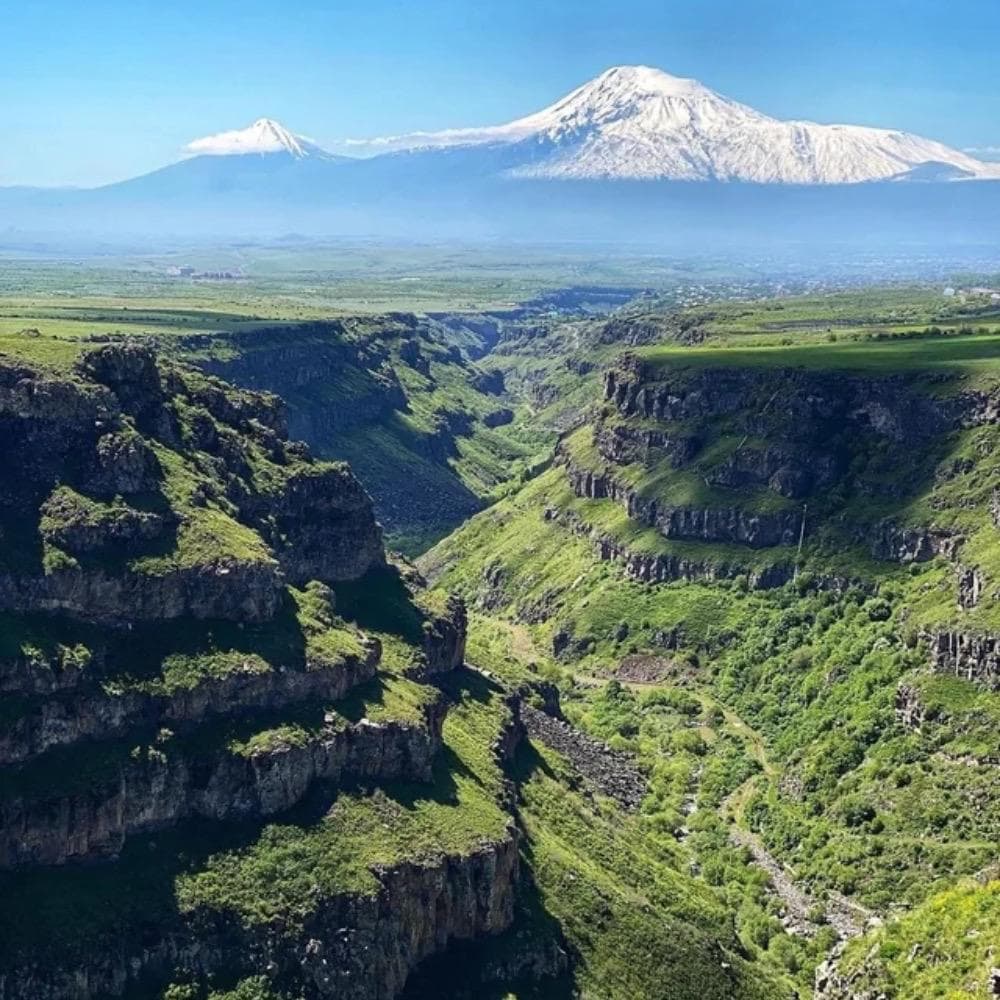
However, scaling this mountain is no easy feat. Its snow-covered peak makes it a treacherous climb year-round. The first successful ascent was in 1829, when the climber grasped the mountain’s profound significance.
The Importance of Preservation
That man was Dr. Friedrich Parrot, who, in 1829, discovered just how sacred Mount Ararat was to the locals. In his writings, Parrot noted, “All the Armenians are firmly persuaded that Noah’s Ark remains to this very day on the top of Ararat, and that no human being is allowed to approach it.”

Despite this belief, others have continued to explore the mountain. While Polo didn’t find anything significant, James Bryce made a startling discovery 50 years later. His findings left historians both shaken and intrigued.
A Significant Discovery
In 1876, James Bryce embarked on his journey up Mount Ararat, not seeking fame or fortune. Unlike treasure hunters or ark seekers, Bryce was a historian, explorer, and Oxford University Professor of Civil Law. His goal was to gather information about the mountain and the story of Noah’s Ark.

Bryce simply wanted to see the legendary mountain with his own eyes. What makes this expedition especially fascinating is that Bryce didn’t even reach the mountain’s summit. Despite this, he uncovered a priceless relic buried in the snow.
An Ancient Timber Beam
As James Bryce made his way up the towering mountain, something unusual caught his eye. Throughout most of his journey, he had only seen typical rocks and boulders, nothing remarkable. But then he noticed something strange.

Sticking out from the snow was what appeared to be a large wooden beam. Bryce tried to lift the beam but found it incredibly heavy, leading him to believe it hadn’t been carried up by any previous explorer. He became convinced it was a piece of Noah’s Ark.
Looking Beyond
With James Bryce’s discovery lingering in the back of their minds, scientists questioned whether he had truly uncovered evidence that Noah’s Ark existed. For decades, they debated how Noah could have navigated the floodwaters with so many animals aboard and what happened to him when he eventually reached Mount Ararat.
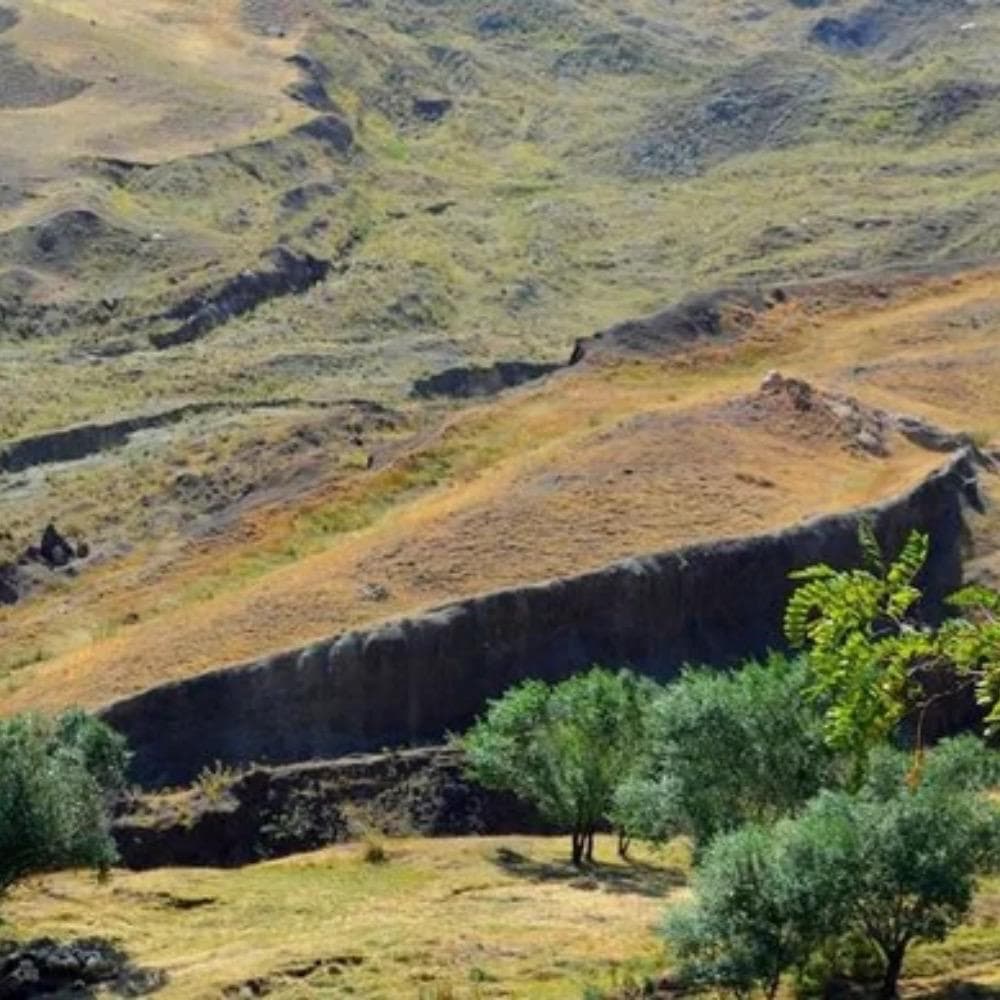
However, in the 1960s, a new discovery shook their assumptions. During this period, a man named Ron Wyatt noticed something strange in a photograph taken 18 miles from the peak of Mount Ararat. The object in the image looked suspiciously like a boat.
The Durupınar Archaeological Site
For years, historians have been puzzled by one detail in the Bible. While it states that Noah’s Ark came to rest in the “mountains of Ararat,” technically, there’s only one Mount Ararat. This led experts to believe that the “mountains” referred to a larger region surrounding Mount Ararat.
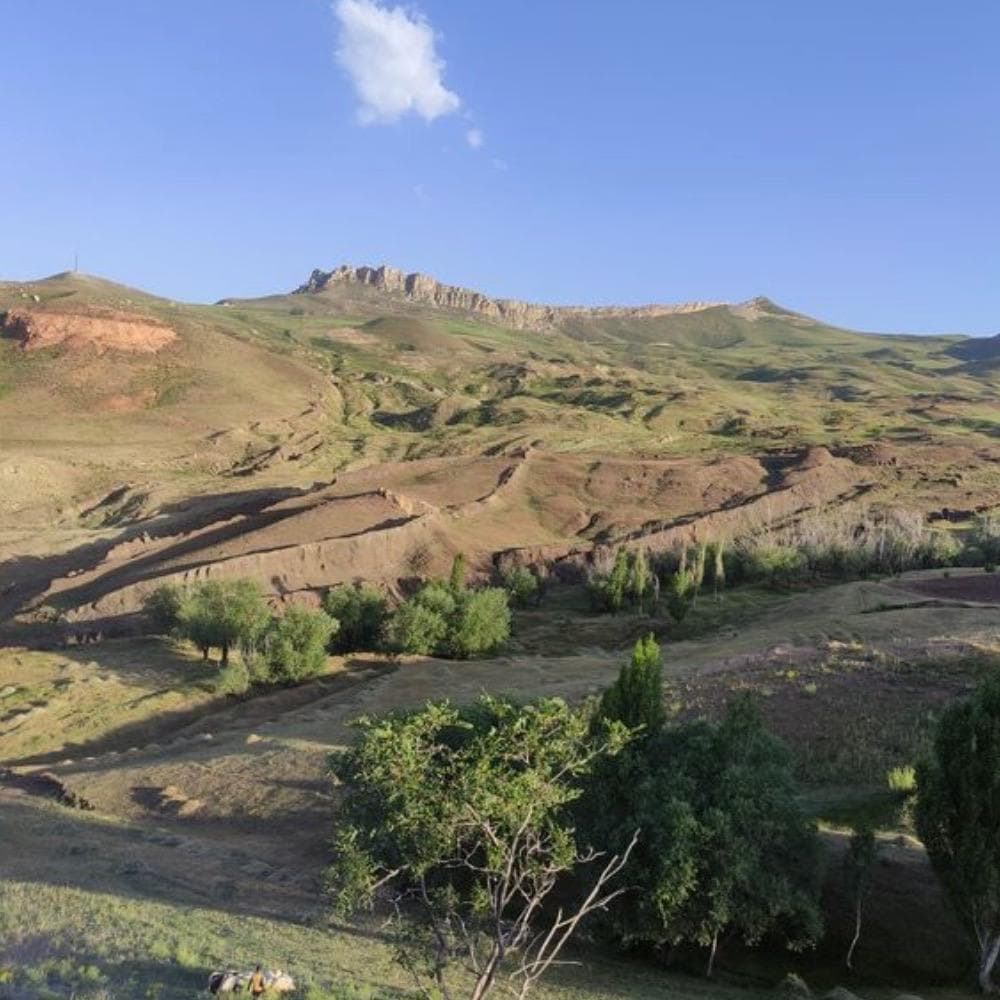
Ron Wyatt focused on this broader region, particularly the Durupınar site, which he saw in the photo. He believed the formation there, resting on a limonite geological foundation, was solid evidence of the ark’s final resting place.
Excavating a Shipwreck
Wyatt was convinced he had found the buried remains of Noah’s Ark, so he journeyed to the Durupınar site alongside geophysicist John Baumgardner and salvage expert David Fasold. Once the two experts saw the site, they too believed that a shipwreck lay just beneath the surface.

To confirm their suspicions, they employed a controversial tool known as a “frequency generator.” Using this technique, their scans revealed a structure underground that closely matched the dimensions of the ark described in the Bible.
Discovering the Stones
As they explored the area for more relics, the team stumbled upon numerous large drogue stones, which were unlike anything they had encountered before. These stones featured holes at the top, leading Fasold to speculate that they had once served as anchors for Noah’s Ark.

In his expert opinion, these stones would have been crucial during high winds. Eager to validate their findings, the expedition team took their discoveries to experts for confirmation. However, the question remained — how would the experts react to these unusual artifacts?
A Theory in Ruins
Although the expedition team believed they had uncovered the truth behind Noah’s Ark, their claims were met with skepticism. When they presented their findings to geologists and archaeologists, they faced harsh criticism, and their methods were dismissed.
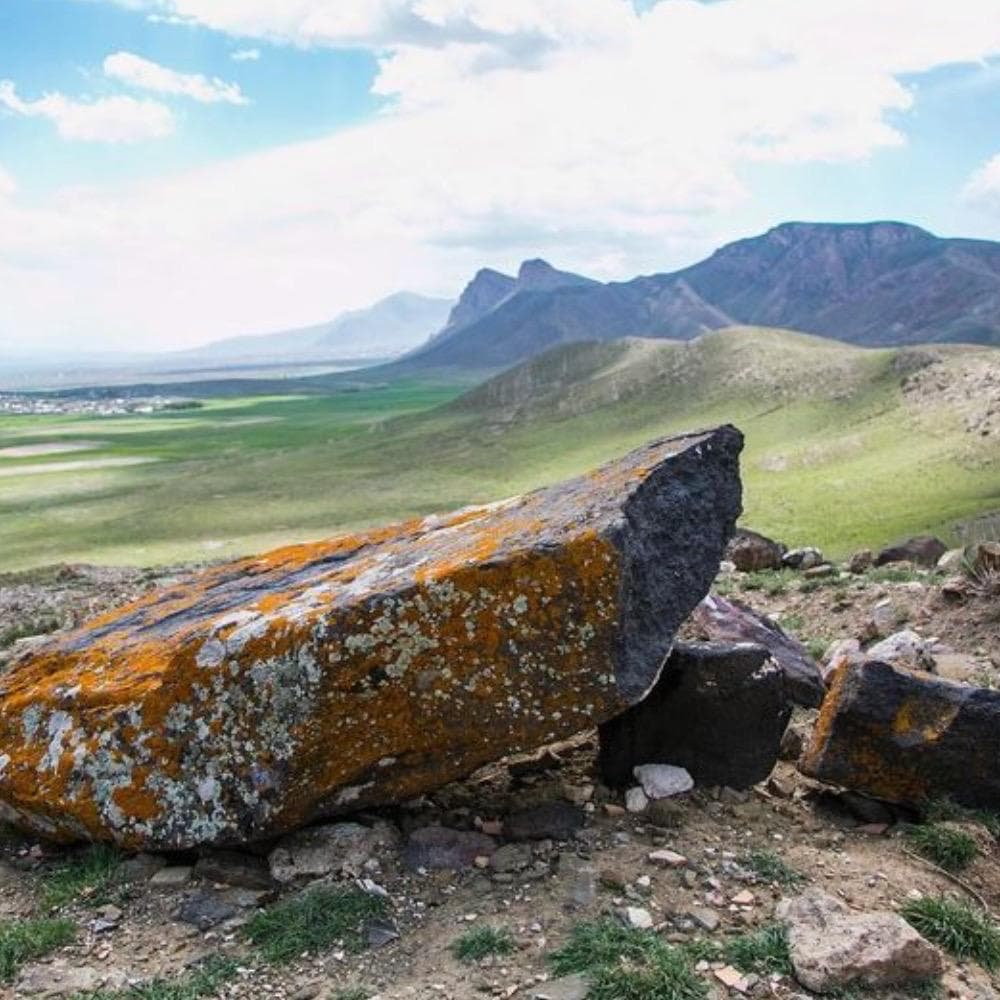
The experts claimed that the “frequency generator” was neither practical nor effective, and the drogue stones were simply grave markers. Consequently, the next group of explorers decided to return to the peak of Mount Ararat for their investigation. This decision ultimately proved fruitful, leading to new discoveries and insights about the legendary ark.
The Great Flood
Explorers find it particularly intriguing that the story of Noah’s Ark isn’t unique to one culture. Throughout history, humans have recounted tales of gods flooding the world to create a fresh start. The intent behind these floods is often to wipe out existing human life and offer a second chance.

These explorers believe there is a deeper connection among these flood stories. They theorize that a singular, overarching narrative may unite them all, suggesting that these accounts reflect shared human experiences and concerns about renewal and survival in the face of divine judgment.
The Epic of Gilgamesh
One of the oldest known flood stories is found in the Epic of Gilgamesh, an epic poem dating back over 4,000 years. The narrative can still be seen on original stone tablets from Babylonian times, providing a glimpse into ancient culture. So, what does this epic reveal? The poem follows King Gilgamesh on his quest for eternal life.
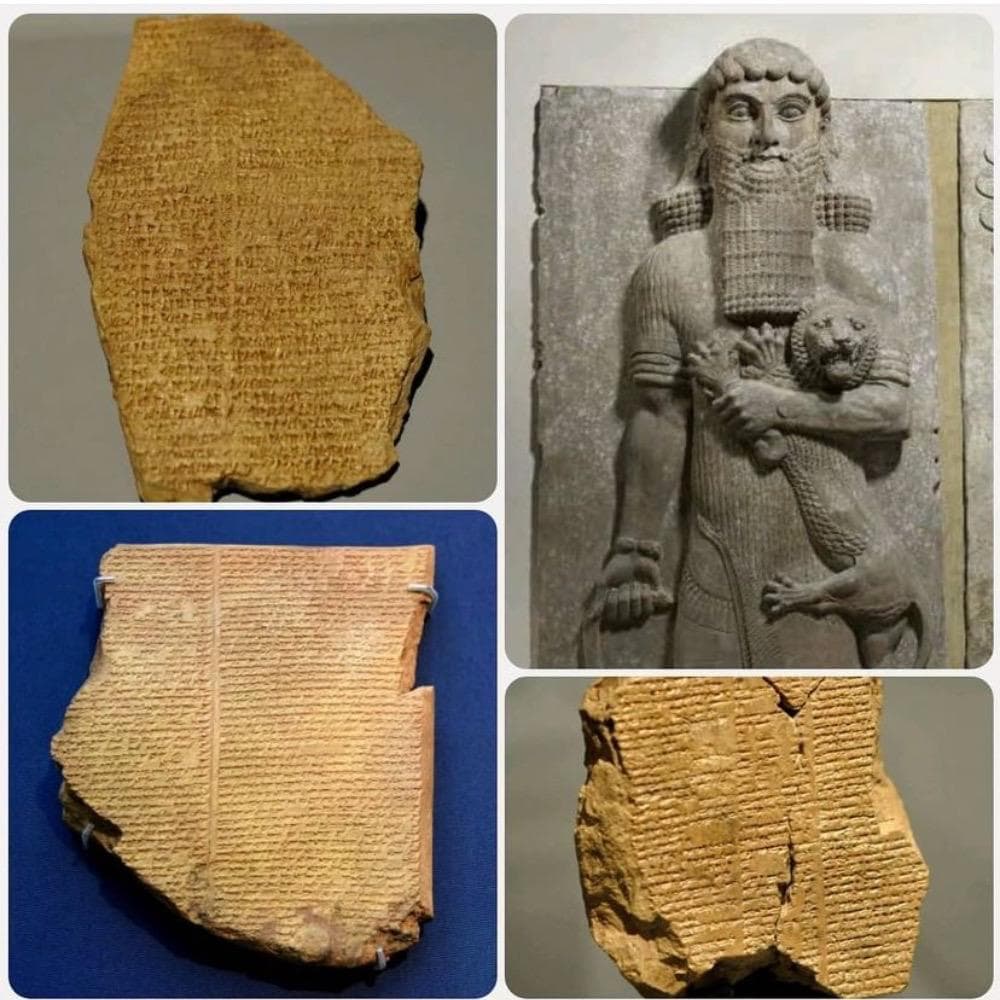
During his travels, Gilgamesh encounters Utnapishtim, who has lived for an exceptionally long time. Gilgamesh asks him to share his story, which turns out to be strikingly similar to the tale of Noah’s Ark.
Crafting a Vessel
Utnapishtim revealed to Gilgamesh that he was forewarned by the god Ea about an impending great flood. To survive, Ea instructed him to construct a large boat. However, the divine intent was not solely for Utnapishtim’s survival; Ea wanted him to save not only himself but also the workers who assisted in building the vessel and the animals from his fields.
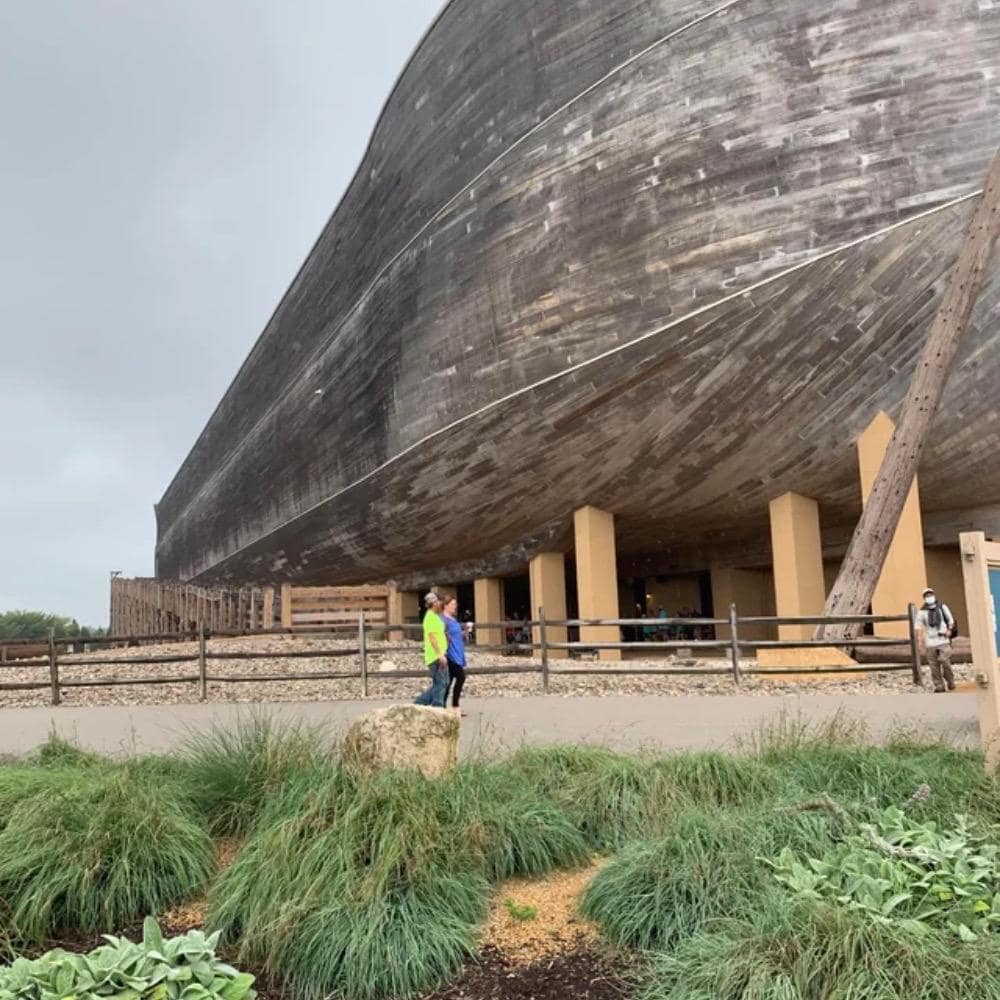
Utnapishtim followed these instructions meticulously, completing the boat just in time as the flood swept across the land, obliterating everything he once knew.
Liberation at Last
Utnapishtim completed the boat just in time, as the great flood soon obliterated the world he knew. Despite the fact that The Epic of Gilgamesh predates the Bible, historians find it undeniable that the tales of Utnapishtim and Noah share striking similarities.

This raises an intriguing question — does the resemblance between these stories make them more or less believable? Some might argue that such commonalities across cultures lend credence to the idea of a historical flood event, while others could suggest that the parallels weaken their authenticity.
Global Domination
While it’s difficult to determine the exact truth behind these ancient stories, one thing is certain — the tale of Noah’s Ark has become increasingly recognizable. This popularity also stems from modern retellings that bring the narrative to contemporary audiences.
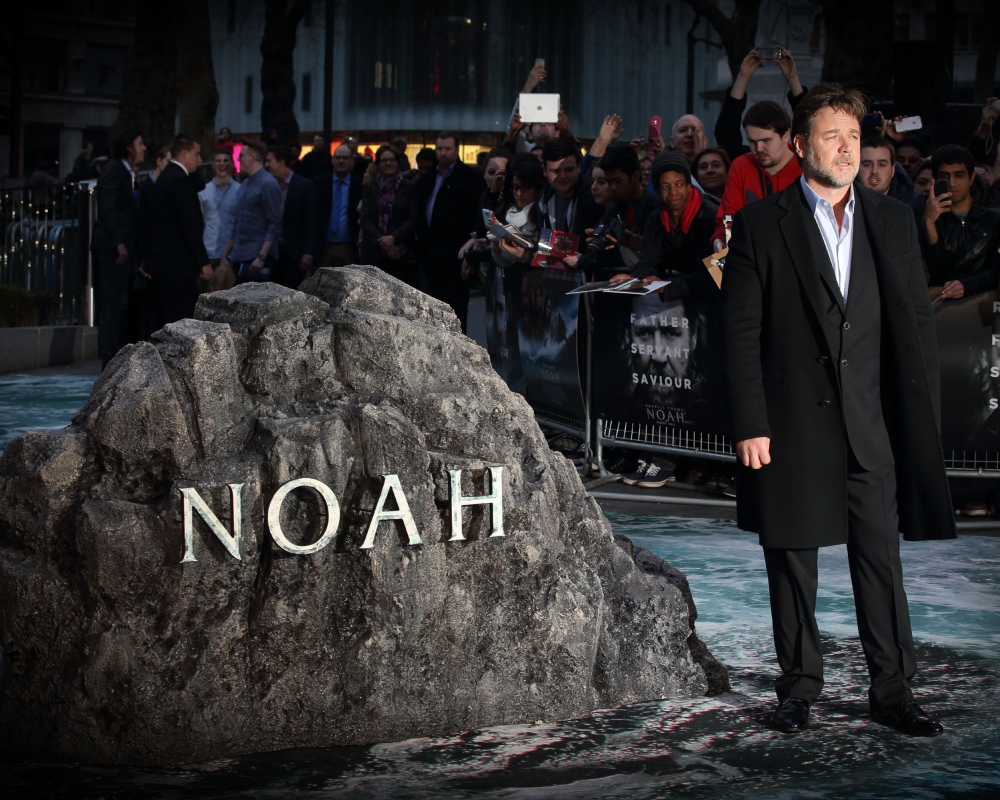
In 2014, director Darren Aronofsky and actor Russell Crowe joined the conversation with their film Noah. Their adaptation contributed to the ongoing fascination with the story, but it raises an intriguing question… were they aware of the latest explorations of Mount Ararat when creating the film?
A Few Key Differences
While the various flood stories share many similarities, there are also notable differences among them. For instance, the narrative of Noah’s Ark contains its own discrepancies, particularly regarding the animals. One passage mentions that Noah took animals in pairs, while another states he took “seven pairs of every kind of clean animal.”

However, for skeptics, the results of a 2007 expedition to Mount Ararat may offer compelling evidence that could shift their perspective. The discoveries made during this expedition could provide new insights that challenge doubts about the story’s validity.
The NAMI Expedition
In 2007, a coalition of explorers from Turkey and Hong Kong united to uncover the truth about Mount Ararat once and for all. Their mission was to find evidence proving that Noah’s Ark had rested atop the mountain. Dubbed the NAMI Expedition, the team was optimistic about discovering something significant.

However, they quickly realized that scaling Mount Ararat presented numerous challenges. The harsh conditions — cold temperatures, fierce winds, and treacherous snowy terrain — made the climb nearly impossible. The explorers faced legal hurdles that complicated their quest.
Awaiting Permits
Mount Ararat’s strategic location near multiple borders makes it a heavily guarded area. Anyone attempting to scale the mountain without the proper permissions risks immediate warnings. Only those who secure an “Ararat visa” are permitted to climb this iconic peak.

The NAMI Expedition team understood that obtaining such a visa would be a significant challenge. Moreover, if they succeeded in gaining access, they would be restricted to a designated path. This limitation meant their exploration would not be as thorough or expansive as they had hoped.
Ascending the Mountain
The team recognized that obtaining an Ararat visa would be a considerable challenge. Even if they succeeded in securing permission to climb Mount Ararat, they faced further limitations — they would be required to stick to a designated path.

Understanding these constraints, the team felt the weight of their predicament. While they were determined to uncover the secrets of the mountain, the limitations placed on their journey raised concerns about whether they could achieve their goals within such narrow parameters.
Entering the Cavern
After several grueling days of climbing and camping in the frigid snow, the NAMI Expedition finally discovered something that ignited their curiosity. At an altitude of 4,000 meters, they stumbled upon a cave that, to their knowledge, had never been explored before.
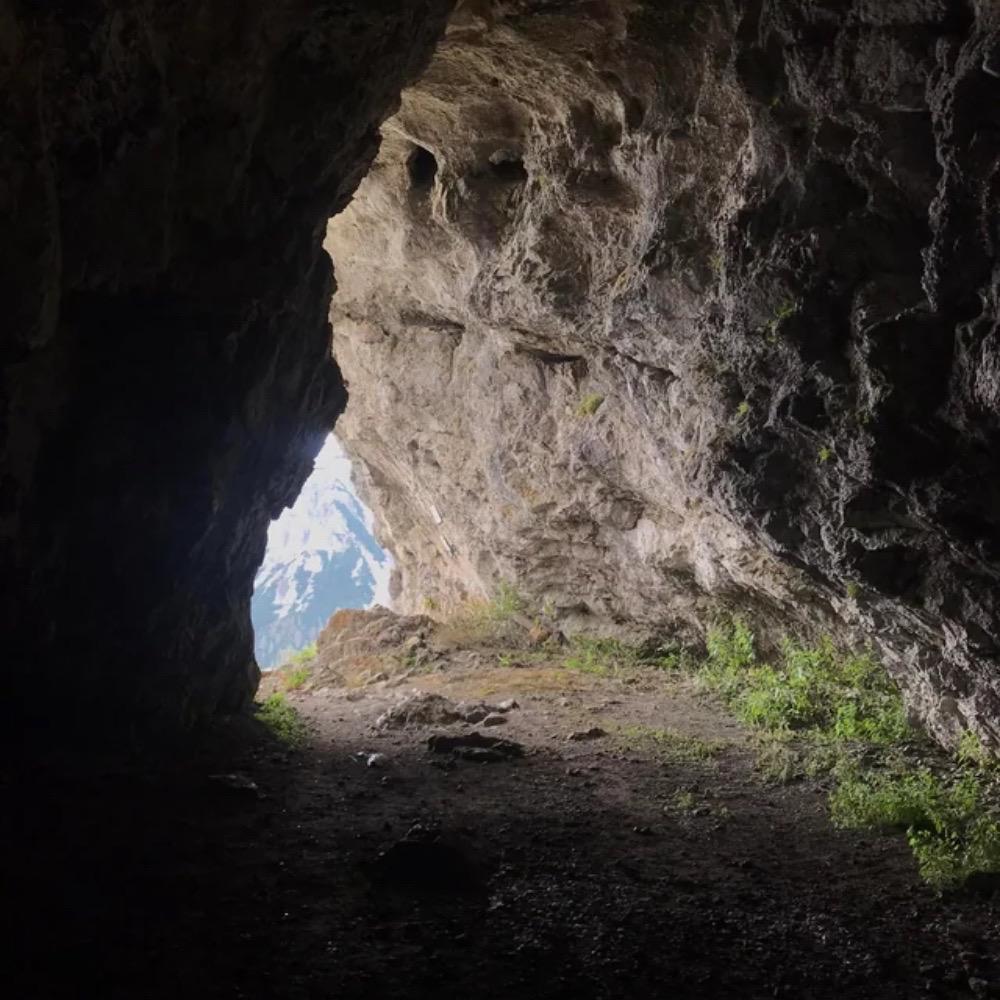
However, it wasn’t the cave itself that captivated the explorers; it was what lay within its depths. As they cautiously entered the cave, flashlights illuminating the dark interior and hearts racing with anticipation, they quickly realized they had uncovered what they had been hoping and praying for all along.
Uncovering a Major Find
As the team’s eyes adjusted to the dim light, they were astonished to find a wooden structure concealed within the cave. One of the researchers excitedly shared with reporters, “The structure is partitioned into different spaces. We believe it matches historical accounts and the ancient boat described by locals.”

The implication was clear: they might have found Noah’s Ark. However, the team understood that their claims would not be easily accepted. To substantiate their discovery, they needed to determine the age of the wood and identify its type.
Tracing Origins
The team recognized that while the wood appeared ancient, they needed definitive proof to counter skeptics who might argue it was erected by previous explorers. They successfully collected a wood sample for testing and anxiously awaited the results. Astonishingly, the tests indicated that the wooden structure was approximately 4,800 years old.

However, this revelation raised further questions. The Bible describes Noah’s Ark as being constructed from a type of wood referred to as “gopher wood,” a term that remains enigmatic as it has never been clearly identified outside biblical texts.
A Wood Mystery
With this in mind, the NAMI team felt an even greater sense of urgency to identify the type of wood they had discovered. If they could confirm it was a known species, they might finally shed light on the elusive “gopher wood” described in the Bible.

This heightened pressure was palpable, as prior to this, only speculative theories existed regarding what gopher wood could actually be. The implications were significant; identifying the wood could potentially validate the biblical narrative in a way that had never been achieved before.
Presenting the Evidence
What makes the NAMI Expedition particularly intriguing is the team’s strategic decision to withhold their discovery from the public for three years. Despite uncovering the wooden structure in 2007, they opted to ensure that their findings were thoroughly vetted and authentic before sharing them with the world.
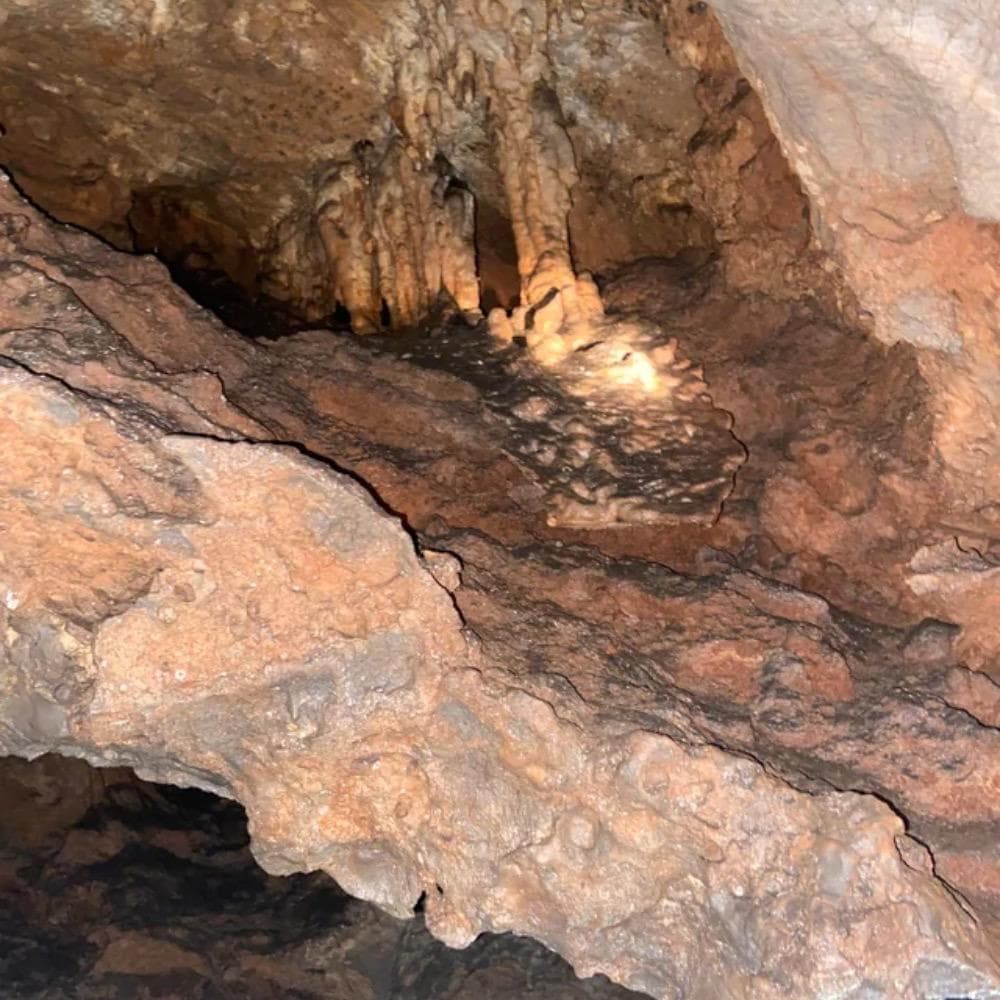
When they finally released their video showcasing the cave and the wooden structure, it quickly captivated online audiences. However, despite their careful preparation, the team was soon met with accusations claiming the discovery was a hoax.
Debunking the Hoax
Critics of the NAMI Expedition certainly acknowledged the authenticity of the video, which clearly showcased a wooden structure. However, they raised serious doubts about the legitimacy of the discovery, suggesting that the team may have staged the find.

They claimed that the wooden structure had previously been located near the Black Sea and was transported to Mount Ararat by hired guides. This allegation of a hoax fueled further controversy, as skeptics posited that the team orchestrated the entire scenario to create the illusion of a groundbreaking discovery.
Searching for Support
Enraged by the persistent criticism, the NAMI Expedition team sought a credible supporter to bolster their claims. They found a strong ally in Muhsin Bulut, the Director of Cultural Ministries in Agri Province. Eager to counter the accusations that the wood had been pre-placed on the mountain, they turned to him for his expert opinion.

Mr. Bulut firmly dismissed the skeptics’ theory, stating that the logistics of transporting heavy timber up a 13,123-foot peak were virtually impossible. His endorsement added a layer of credibility to the expedition’s findings.
Questioning Everything
In the eyes of the NAMI Expedition team, their discovery represented definitive proof that Noah’s Ark was not just a myth but a tangible structure resting near the peak of sacred Mount Ararat. However, the weight of their claims raised profound questions about verifiability. What if they were indeed correct? The implications would be monumental.

The reality of a massive ark saving a diverse array of animal species from a global flood would require a reevaluation of our knowledge of biology, geology, and even history. Such a revelation could lead to paradigm shifts in how we view ancient texts, the evolution of species, and the timeline of Earth’s geological events. The potential fallout from their discovery stretched far beyond the mountain.
Insights from Science
Today, the scientific consensus in geology and biology suggests that the story of Noah’s Ark is unlikely to have occurred as described. Modern biologists utilize advanced techniques to analyze the DNA of fossils. By comparing these genetic codes, they can identify significant changes that might result from catastrophic events such as a global flood.
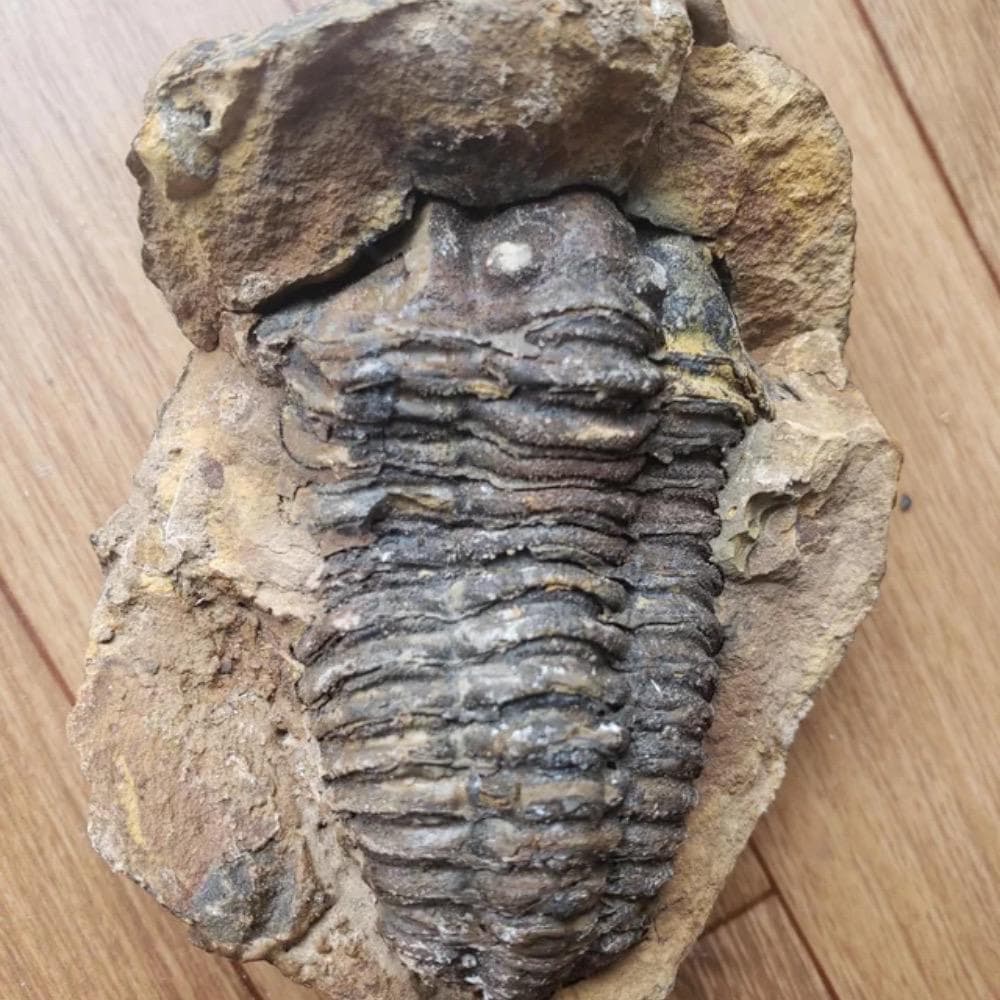
If such a flood had indeed wiped out vast populations of animals while preserving pairs of each species, we would expect to see distinct genetic markers or shifts in their DNA. However, extensive research has not revealed evidence to support this hypothesis.
Absence of Geological Evidence
However, the absence of biological evidence is not the only issue plaguing the Noah’s Ark narrative. Throughout history, there have been numerous accounts of great floods, yet no geological evidence has substantiated the occurrence of a global deluge.

Experts assert that if such a catastrophic flood had swept across the Earth, it would have left significant traces in the geological record. As of now, no such evidence has been discovered. Despite this overwhelming evidence against the story, many individuals still hold firm beliefs that Noah’s Ark was rooted in actual events.
No Fire Without Smoke
It’s often said that there’s no smoke without fire, and even the most bizarre mythological tales can be influenced by real-life events. As we’ve noted, the story of Noah’s Ark is not the only narrative about a great flood. This leads to a compelling question: is there any truth behind these stories?

Proponents of this theory argue that for a tale to resonate with so many people over millennia, there must be some kernel of truth at its core. They suggest that localized flooding events, perhaps in ancient Mesopotamia, could have inspired these narratives.
A Smaller Flood?
Part of this theory posits that the Great Flood was likely a localized event rather than a global phenomenon. Scientists have uncovered evidence of a significant flood that ravaged ancient Mesopotamia thousands of years ago. Archaeological findings suggest that this catastrophic event led to widespread devastation across the region.
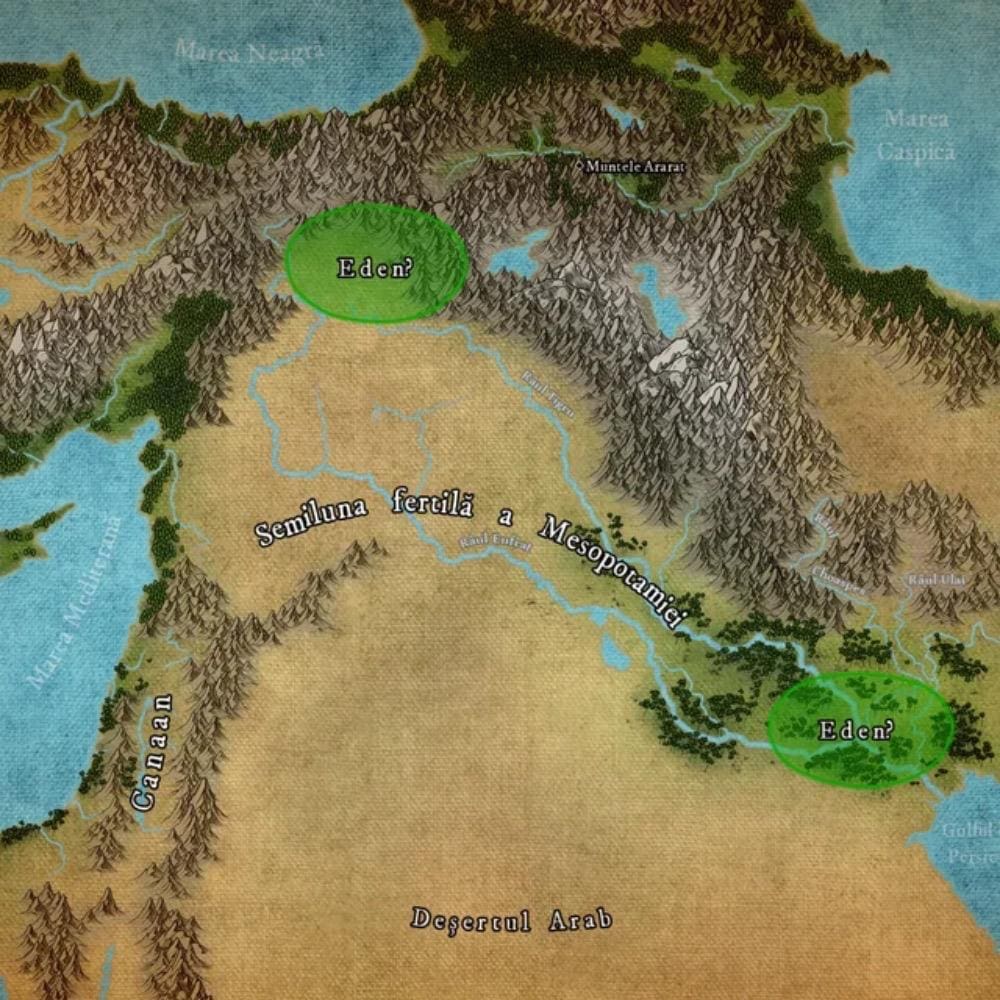
During their investigations, researchers discovered remnants of a large boat that bore striking similarities to the account of Noah’s Ark. This vessel was reportedly used to save both humans and animals from the rising floodwaters.
Is Proof Necessary?
The people who question the legitimacy of the Noah’s Ark story do so because they lack concrete evidence to support it, while believers often see things differently. In their opinion, the narratives within the Bible don’t require physical proof; they trust that God acts with purpose and intention.

While scientists acknowledge this perspective, they remain critical of it, as faith-based reasoning doesn’t satisfy their quest for empirical evidence. This skepticism is why the NAMI Expedition took extra measures to substantiate their findings.
Waiting for Discovery
The NAMI Expedition continues its quest to prove that the wooden structure discovered on Mount Ararat is the very ark that sheltered Noah and the animals during the Great Flood. Until their findings are fully released, a lingering question remains — will others venture up the mountain in search of new evidence?

A significant point of curiosity is whether future explorers will retrace the NAMI team’s steps and investigate the cave they found, or if they will choose to explore other areas of the mountain. The allure of Mount Ararat remains strong.
Planning Future Expeditions
The timeline for these adventures remains uncertain. Obtaining an Ararat Visa is no easy feat, and the Turkish government has become even more stringent since the NAMI Expedition. The NAMI team’s actions during their climb reportedly angered officials deeply.

Their expedition raised questions and concerns about the preservation of the site, leading to increased scrutiny of those seeking to explore the mountain. As explorers prepare to tackle the challenges of scaling Ararat, they must navigate not only the physical demands of the ascent but also the complex bureaucratic hurdles that come with it.
Facing Trouble
When you make significant claims, you must be prepared to substantiate them. Recognizing this, the NAMI team decided to take samples of the wooden beams they discovered in the cave on Mount Ararat for further analysis. Their aim was to carbon-date the wood, a crucial step in verifying its age.

However, this decision did not sit well with the Turkish government. Taking artifacts from such a culturally and historically significant site raised concerns about preservation and national heritage. The government’s response to NAMI’s actions led to a tightening of regulations.
The Future at Risk
Given the recent developments, it’s expected that the Turkish government will implement even stricter regulations for explorers aiming to investigate Mount Ararat. This could jeopardize future expeditions and limit further discoveries related to this iconic site and the legend of Noah’s Ark.

So, what’s the prevailing view? Is the ancient tale rooted in truth, or is it merely a myth with no scientific foundation? The findings from the NAMI Expedition certainly added a twist to the narrative, sparking renewed interest and debate.
A New Interest
Regardless of your stance on the NAMI Expedition’s findings, it’s undeniable that they’ve sparked a renewed interest in the Great Flood and the existence of Noah’s Ark.

On one side, there’s a wooden structure resembling a boat, dating back to a time that aligns with the proposed flood. On the other, a body of scientific research suggests a lack of evidence for such catastrophic waters.
An Unresolved Mystery
Yet, these narratives—whether it’s the story of Noah or other flood myths — continue to resonate and inspire. They provoke thought, discussion, and exploration, reminding us of our enduring fascination with history, mythology, and the mysteries of our past.

As debates continue, these stories will undoubtedly remain a significant part of our cultural and spiritual dialogue. Many believe there’s a significant piece of evidence yet to be discovered that could definitively prove the existence of Noah’s Ark and validate the Great Flood.
Awaiting Discovery
Such a discovery would not only reshape our understanding of history but also challenge critics to reevaluate their views on the Bible and religion as a whole. While this elusive evidence remains unfound — perhaps even beyond our lifetime — the intrigue surrounding the story persists.

Noah’s Ark continues to be a controversial and captivating subject in the exploration community, driving researchers and adventurers alike to seek answers. As discussions evolve and expeditions take shape, the legacy of this ancient tale remains alive, ensuring that the quest for knowledge continues.
History is full of fascinating stories, but not all of them are true! In fact, some common historical events are a downright farce, as it turns out! From Marie Antoinette’s “Let them eat cake” comment to the tale of the very first Thanksgiving, some events we’ve heard about never actually happened the way we think they did. Let’s look at some of the most interesting historical myths passed down but didn’t really happen as we uncover the truth behind these famous stories.